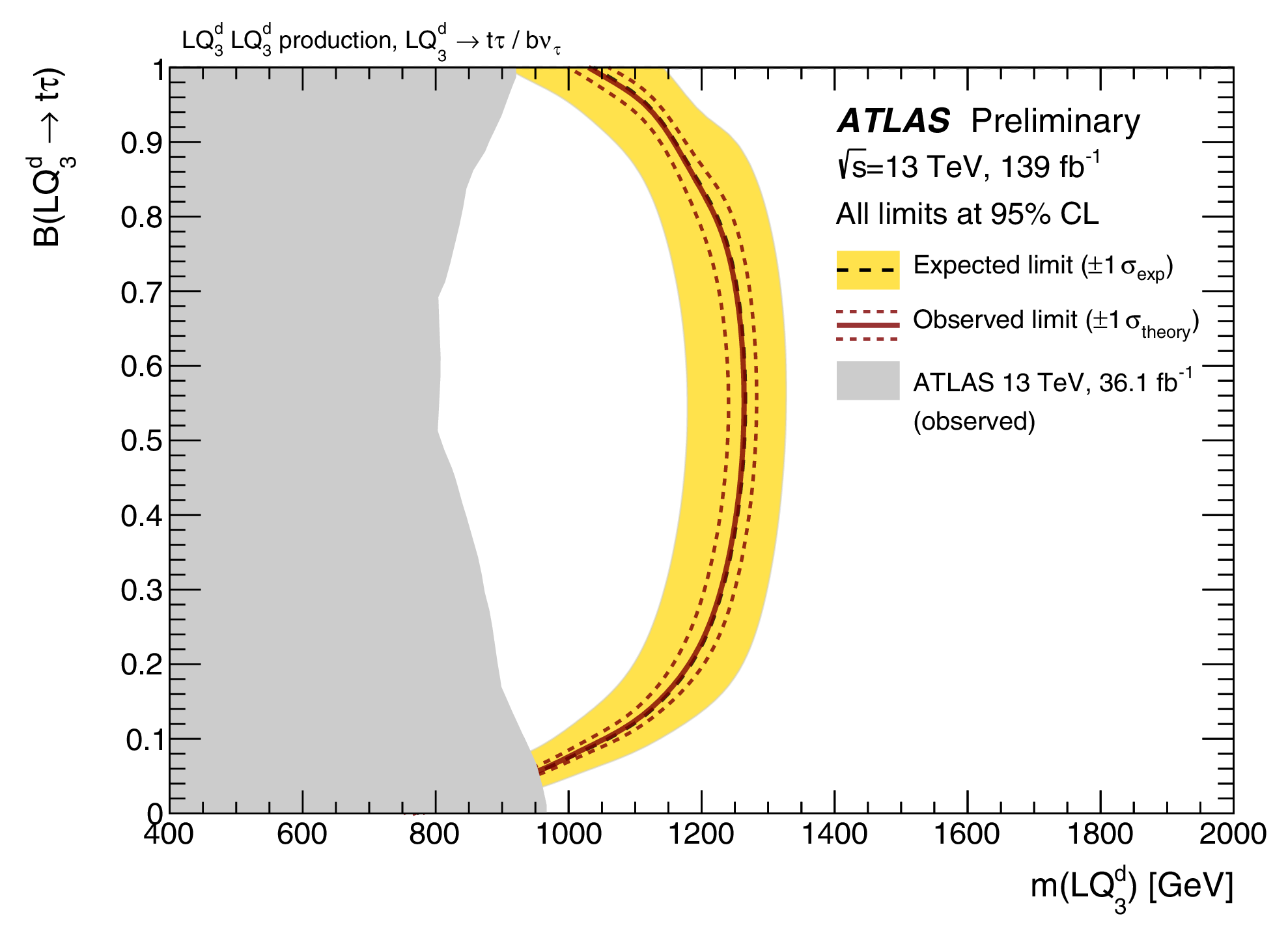Two models, one analysis
New ATLAS results with contributions from our group
24.03.2021
The ATLAS collaboration just released a new preliminary result for the Moriond conference on Electroweark Interactions and Unified Theories, one of the most important international conferences on high-energy physics. In this conference note, a search is presented that has been carried out by the group of Dr. Alexander Mann at the chair of elementary particle physics at the chair of elementary particle physics at the Ludwig-Maximilians-Universität.
This search looks for new phenomena which are not described by the current Standard Model of particle physics. Specifically, we are looking for events which sport one or two jets that arise from the hadronization of b-quarks in addition to one or two tau leptons that decay hadronically. These are highly complex types of objects, both of which can only be reliably identified through the use of advanced machine-learning techniques. Events like this would arise from the production of pairs of the supersymmetric partner of the top quark, when they decay into the supersymmetric partner of the tau lepton and further into a gravitino, the superpartner of the graviton.
Due to the similarity of the detector signatures, this analysis cannot only be used to search for traces supersymmetric particles would leave in the ATLAS detector, but we can also use the same analysis to search for another promising extension of the Standard Model: the existence of leptoquarks. Leptoquarks are hypothetical particles that have also received a lot of attention by theorists recently, because they can provide a potential explanation of the intriguing anomalies that are observed in the decays of different types of B mesons. They can decay into a lepton and a quark, hence the name, and a feat which would set them apart from all particles we have ever observed.
The search is based on the full dataset of proton-proton collisions provided by the Large Hadron Collider in its second long physics run from 2015 to 2018 and recorded with the ATLAS detector. As the result of the analysis, the detector data is found to be in very good agreement with the background prediction obtained from the Standard Model.


Two of the plots from the conference note: the left shows the excluded mass ranges (dark red line) for the supersymmetric model as a function of the masses of the top squark and tau slepton. The right plot show the excluded region for the leptoquark model as a function of the mass (horizontal axis) and the probability that the decay of the leptoquark yields a charged lepton (vertical axis).
Alas, this good agreement rules out the existence of both the supersymmetric particles or leptoquarks up to a certain mass, at the conventional confidence level of 95%: If the supersymmetric particles or leptoquarks predicted in these new models existed with a mass below these bounds, the chances we could have missed them are low, as then we should have seen a discrepancy between the observed yields and the Standard Model prediction. But they could still be heavier, because then the rate at which they are produced in the proton-proton collisions at the Large Hadron Collider are too low for us to find them. The search will thus continue when the Large Hadron Collider will be fired up for the third time, which is planned for 2022.
Further reading:
- ATLAS-CONF-2021-008: Search for new phenomena in pp collisions in final states with tau leptons, b-jets, and missing transverse momentum with the ATLAS detector
- Overview of the ATLAS results for the Moriond conferences: here

